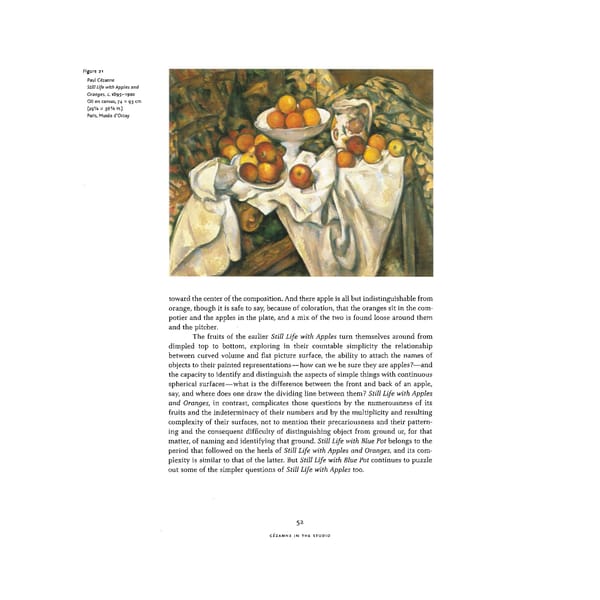Figure 21 Paul Cézanne St/7/ Life with Apples and Oranges, c. 1895-1900 Oil on canvas, 74 x 93 cm 1 5 (29 /8 x 36 /8 in.) Paris, Musée d'Orsay toward the center of the composition. And there apple is all but indistinguishable from orange, though it is safe to say, because of coloration, that the oranges sit in the com- potier and the apples in the plate, and a mix of the two is found loose around them and the pitcher. The fruits of the earlier Still Life with Apples turn themselves around from dimpled top to bottom, exploring in their countable simplicity the relationship between curved volume and flat picture surface, the ability to attach the names of objects to their painted representations—how can we be sure they are apples?—and the capacity to identify and distinguish the aspects of simple things with continuous spherical surfaces—what is the difference between the front and back of an apple, say, and where does one draw the dividing line between them? Still Life with Apples and Oranges, in contrast, complicates those questions by the numerousness of its fruits and the indeterminacy of their numbers and by the multiplicity and resulting complexity of their surfaces, not to mention their precariousness and their pattern- ing and the consequent difficulty of distinguishing object from ground or, for that matter, of naming and identifying that ground. Still Life with Blue Pot belongs to the period that followed on the heels of Still Life with Apples and Oranges, and its com- plexity is similar to that of the latter. But Still Life with Blue Pot continues to puzzle out some of the simpler questions of Still Life with Apples too. 52 CÉZANNE IN THE STUDIO
 Cézanne in the Studio: Still Life in Watercolors Page 66 Page 68
Cézanne in the Studio: Still Life in Watercolors Page 66 Page 68